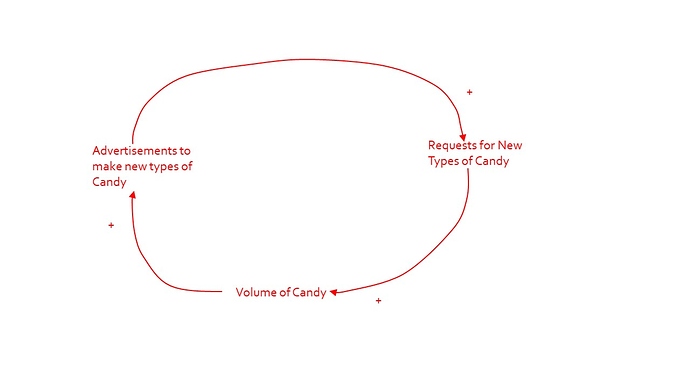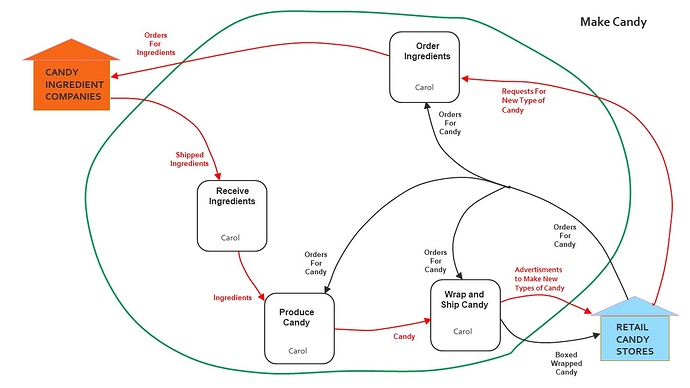Tony Markatos: Thanks. I agree, and I think Gene’s Kumu maps (and other similar efforts; I have been using CMaps for my Issue Maps out of habit) ) are doing just that. The common problem is how to connect the maps with the discourse, Kumu and Debategraph are trying, so far it always need some human mapmaker but should be automatic. You are right in calling for ‘just barely complex enough’.
I would state the effort a little differently than the product promotion it sounds like now, ‘bringing Systems Thinking to the masses’ as a marketing effort for ST. Would ‘the proof of the pudding’ lie more effectively in showing how ST can help people (I’m not comfortless with ‘the masses’) get to agreements about confronting big problems? In the planning discourse I am struggling with, I see the role and value of ST thus far mainly in providing input to some of the questions arising in the planning discourse, or rather to some types of questions about planning discourse premises: In the typical ‘pro’ (or ‘con’) argument about a plan proposal
"Plan A ought to be adopted, because
1) Plan A will lead to effect B, given conditions C,
and
2) Effect B ought to be pursued (desirable)
and
3) Conditions C are (or will be) present."
the concerns about the premises are usually about the ‘truth’, probability or (I prefer) plausibility of the claims, but also about
explanations: What are A, B, C, what is meant by ‘lead to’ (or any similar relationship claim in such arguments). Meaning, Definition, description?
A prime concern of ST is of course the relationship of premise 1, (causes etc.) but also premise 3, which, when fully explored and understood, Is the entire ‘system’ into which Plan A will intervene. The first part of this is the 'understanding of the ‘existing’ problem situation, the second part (based on the validity or plausibility of all the relationship claims of premises type 1) is aimed at the prediction of the system change upon plans such as A. This kind of ‘understanding’, conveyed in maps of the ‘models’ is the supremely important contribution of ST (in my imperfect understanding).
So far, the unfortunate misunderstanding created by many ST models, created by their apparent complexity created by the systems expert is that the model exudes not only a claim of authoritative validity that obviates and even resists further argumentation – but it’s just the modeler’s model – and the impression that the ‘solution’ to the problem somehow emerges from the model. That is, in short – it tends to ignore the controversy, the differences of opinion about what specific performance measures ‘ought’ to guide the decisions or agreements. ‘Guide’ – aka ‘facilitate’ – the team effort towards a semblance of consensus. Here, the ST community mostly (and plausibly) talks from its currently predominant perspective of consulting service to paying clients. There are ‘teams’ – selected for expertise, perhaps creativity, but of course commitment to the survival and profit of the organization (let’s not ignore the fact that they are mostly employed by either the client entity or the consulting firm). And ‘facilitators’ trying keep the effort within time and budget constraints but naturally compelled to declare the outcome a success – by virtue of being generated by ST. Potential sources of bias, perhaps? I know, it’s not a fair suspicion to cast on the many admirable efforts we do see. But. Or as Gene says: AND?
So I’m having trouble getting the ST community interested in the controversial aspects of more public planning issues, differences of opinions, especially about the type 2 premises of the pros and cons, and how ‘conclusions’ of the discourse will emerge from the different judgments about all the arguments, by all the different parties concerned about and affected by the project. Of course I would say that what I’m doing in trying to conceive of a better planning discourse, its platform, and associated process and decision modes is a kind of systems work. But there are many approaches, perspectives, principles to the design or planning for the big change issues that are starting from very different points of view than ST. And they claim to be taken seriously as well.


